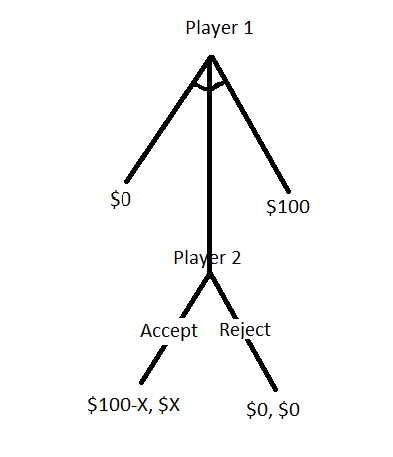Adam Grant, in his best-selling book Give and Take, describes the behavioural characteristics of three types of humans based on their attitudes towards other people – takers, matchers and givers. According to the author, takers give away (money, service or information) when the benefits to themselves are far more than the personal costs that come with the transfer. Givers, on the other extreme, relish the value to others more than the personal cost to themselves. Naturally, the matchers are in between – strictly reciprocating.
Grant reference to a paper published by Kahneman et al. in 1986 based on a concept called the ultimatum game, a well-known idea in game theory. Today, we will look at the game. We’ll discuss the study results another day.
The game

We will illustrate the concept through a 100-dollar game. Player 1 (donor) gets 100 dollars, and she can offer – anything from 0 to 100 – to player 2 (receiver). If player 2 accepts, she gets it, and player 1 takes the rest (100 – X). If player 2 rejects the offer, then no one gets anything.
Rationality vs sense of fairness
If the receiver was rational, her actions would have been governed by her self-interest, as expected by economic theories, and she would have taken whatever was offered. After all, something is better than nothing. But this doesn’t always happen. There is a limit to the offer below which the receiver may feel the donor’s injustice.
Further Reading
Give and Take: Adam Grant
Ultimatum Games: William Spaniel

